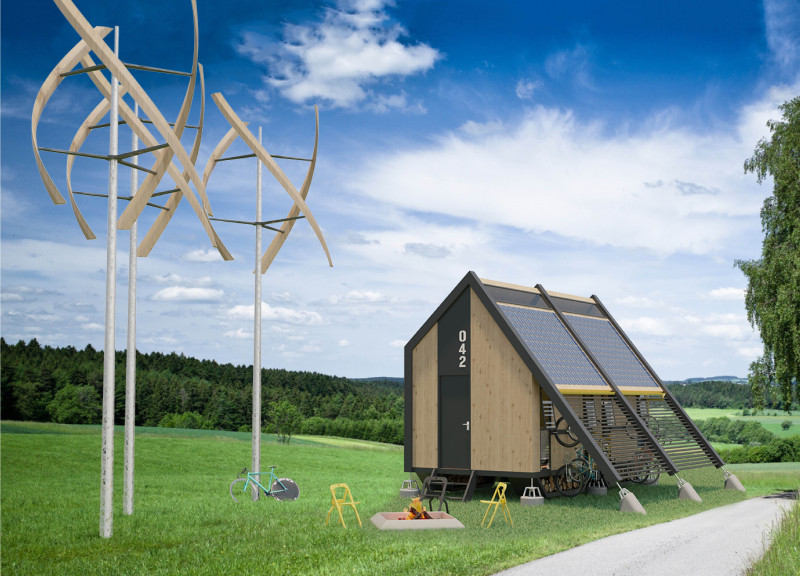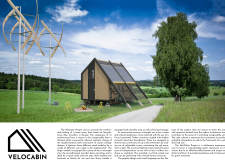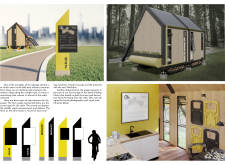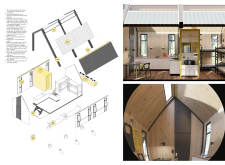5 key facts about this project
Sustainability and Component Design
One of the unique aspects of the Velocabin Project is its sustainable design approach. The architectural structure utilizes cross-laminated timber for its main body, providing both strength and insulation while minimizing the ecological footprint. The roof, featuring a double-slanted design, serves a dual purpose: it enhances the cabin's traditional aesthetic while allowing for the efficient collection of rainwater and solar energy through integrated solar panels.
The interior layout is characterized by modular elements, allowing for flexibility in usage. The cabins can accommodate varying numbers of travelers, with options for communal spaces and private sleeping areas. This adaptability caters to diverse user needs while promoting a sense of community among cyclists. Durable finishes, including metal accents and large glass panels, enhance the structure's resistance to environmental factors while ensuring abundant natural light.
Innovative Architectural Solutions
The Velocabin distinguishes itself through several innovative design features. Notably, its use of adjustable foundations allows the cabin to be installed on uneven terrain, accommodating diverse landscapes. This aspect is critical for installing the Velocabin at various cycling routes without significant site disturbance.
The integration of renewable energy sources, like wind turbines alongside solar panels, reflects a comprehensive approach to energy independence. This enhances the user experience by ensuring that the cabins remain operational without reliance on traditional energy sources. Additionally, outdoor elements such as communal bonfire areas encourage interaction among guests, further enriching the experience of staying at the Velocabin.
Functional Aesthetics and User Experience
The architectural form of the Velocabin merges aesthetic appeal with practical functionality. The design language incorporates traditional cottage elements, creating a recognizable and inviting profile. Extensive glazing promotes visual connectivity with the environment, allowing occupants to stay immersed in nature. Internally, the use of multipurpose furniture aids in maximizing space while maintaining comfort.
Conceptualized to foster a connection with the surroundings, the Velocabin ultimately enhances the travel experience for cyclists. With a commitment to ecological sustainability and user-focused design, the project sets a benchmark in the realm of temporary accommodation for outdoor enthusiasts.
For a deeper understanding of the architectural plans, sections, and designs that led to this innovative project, readers are encouraged to explore the complete project presentation.


























